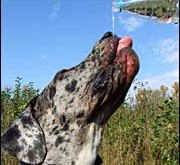Pet Tips
Dogs and Cats that Drink Too Much Water – Pet tip 240

Water is the elixir of life and it is essential to all living things. Our pets need to have access to water at all times and their water bowls should be filled with fresh water every single day. When our pets don’t get enough water dehydration can occur. Sometimes though, our pets drink too much water and although we know that water is good for our pets, too much is too much. Serious health problems can occur when our pets drink too much water. Sometimes the reason they drink so much stems from psychological or behavioural problems; other times the reason is medical. Either way, drinking too much water is dangerous for pets.
When a pet drinks too much water, its urinary system is also affected. What goes in must come out so thirst and urination are naturally linked. The medical term for this condition is called PolyUria (urinating too much)/PolyDipsia (drinking too much) or PU/PD for short. The top reasons cats suffer from this condition include; kidney disease, diabetes mellitus, hyperthyroidism, kidney infection and liver disease. The top reasons dogs suffer from this condition include; diabetes mellitus, kidney disease, kidney infection, liver disease and Cushing’s disease.
How do we know when our pets are drinking too much water or urinating too frequently because of PU/PD? PolyDipsia is defined as the consistent drinking of more than 100ml of water per kilogram of weight per day. PolyUria is defined as the consistent urination of more than 50ml of water per kilogram of weight per day. You will notice that only half the water drank comes out as urine. Where did that other 50mls go? The other 50mls are eliminated from your pet’s body mainly through stool, sweat, evaporation and tears.
Although the numbers in the paragraph above are a great guide, we don’t always see just how much our pets are drinking or urinating. This is a mistake on our parts as checking to see how much our pets are drinking and eliminating is one of the key markers of good health. Therefore we should make it our business to pay more attention to just how much our pets drink and urinate and contact our vets when drinking and urination increases.
The longer we wait, the worse this condition gets. Luckily, if we do notice this increase in drinking and urination and contact our vet quickly, PU/PD will be picked up with initial blood and urine testing, plus or minus a few additional tests. In order to be proactive about this condition, routine yearly blood and urine testing is highly recommended for dogs older than seven and cats older than ten years of age. These are the ages when they are most susceptible to this problem.

I always put down a bowl of fresh water everyday. Around 9pm I tip most of it out and leave enough for my dog to have a small drink throughout the night, but not enough to make them need another toilet walk.